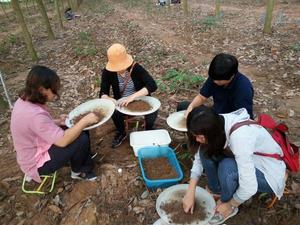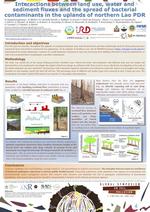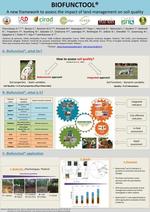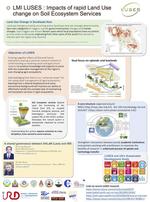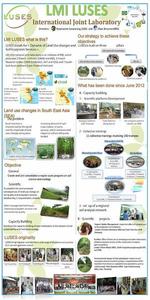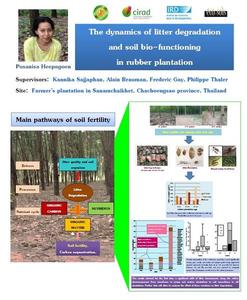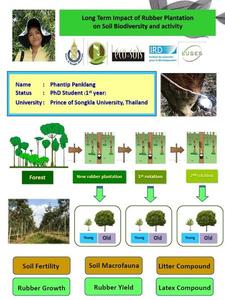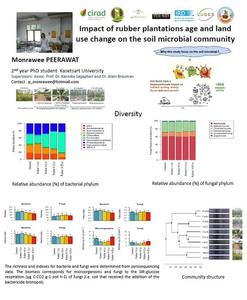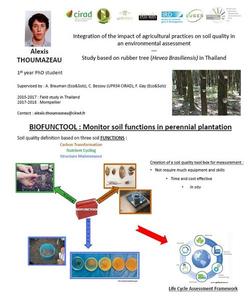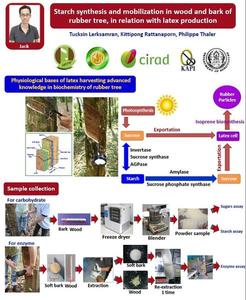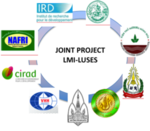Collective training How to monitor Soil Biodiversity
==__==__==__ ==__==__==__ ==__==__==__
Soil is one of the most diverse environment of earth (~25% of global biodiversity in terms of species), but also one of the least known concerning its biodiversity (less than ~ 10% of described species). From a functional point of view, soil organisms (including plants) provide crucial ecosystems functions that supply important ecosystem services. For instance, decomposers are responsible for chemical transformations of organic matter and nutrient cycling and macro-invertebrates (earthworms and arthropods) are able to alter, physically and permanently, the environment of others species. Bioturbation activities of earthworms have a major impact on the spatial structure of the soil, the incorporation of organic matter in the soil and microbial activity.Any changes in soil biodiversity, as induced by land use changes, may impact the whole functioning of the ecosystem,and in particular, its productivity, which is a central ecosystem service.
Trainers:
- Jean Trap (IRD, LMI LUSES, UMR ECO&SOLS)
- Alain Brauman (IRD, LMI LUSES, UMR ECO&SOLS)
Thibaud Deca√ęns Prof. Univ. Montpellier (CEFE, UMR 5175 CNRS)
Download
LMI LUSES Posters
Presentation of the ECOFILTER Team at the Global Symposium on Soil Pollution (GSOP18), FAO, Rome, 2-4 May 2018
Poster of the BIODIV TREE team presented at the SOM management conference held in Braunsweig on the 30 and 31 of May
Poster of the BIODIV TREE team presented at the SOM management conference held in Braunsweig on the 30 and 31 of May
Synopsis of LUSES 2017-2019
- LDD-IRD a long history of scientific cooperation
- Impact of Rubber Tree Plantation on Soil Biological Diversity
- LDD-LMI LUSES Platform of Microbiology
- LMI LUSES presentation
- PCR LDD-LMI LUSES Platform
- Laboratory guide: hygiene and safety in English
- Laboratory guide: hygiene and safety in Thai
PhDs students' scientific posters
The dynamics of litter degradation and Soil-bio functioning in Rubber plantation : Pusanisa Heepngoen
Long term impact of Rubber Plantation on Soil biodiversity and Activity: Phantip Panklang
Impact of Rubber Plantation age and Land use change on the soil microbial community : Monrawee
Integration of the impact of agricultural practices on soil quality in an environmental assessment : Alexis
Starch Synthesis and Mobilization in wood and bark of rubber tree, in relation with Latex production : Tuksin




